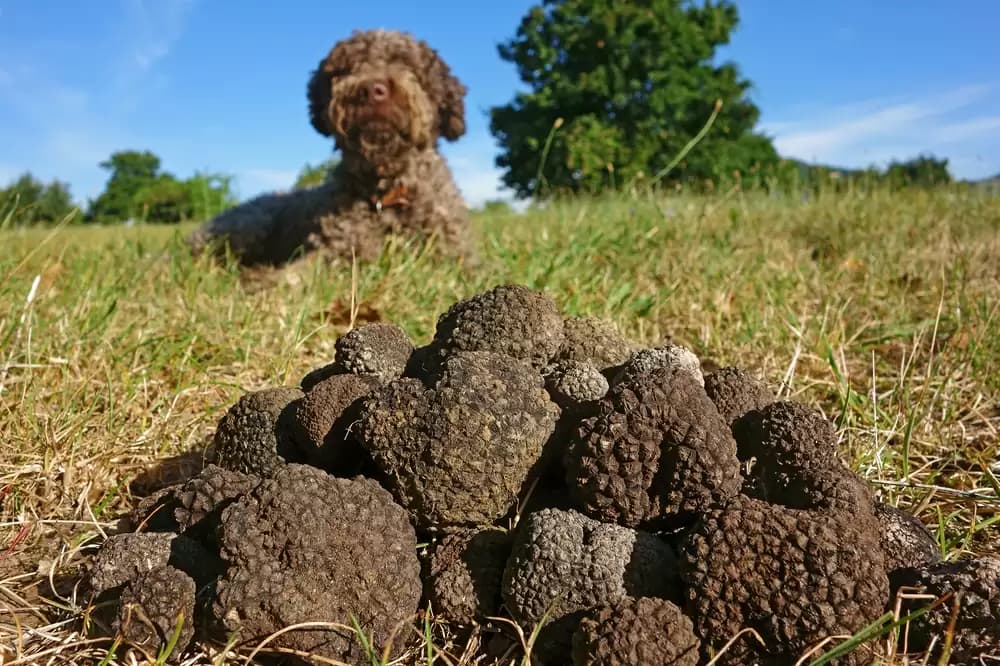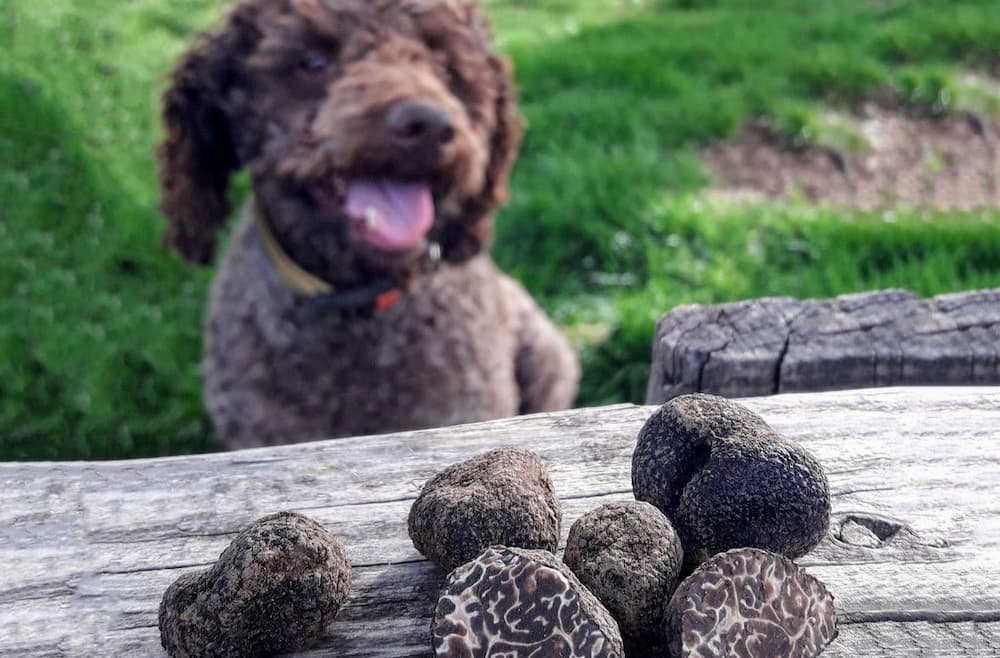Truffle hunting is a time-honoured tradition in Tuscany, dating back to the Ancient Romans (who ascribed powerful aphrodisiac qualities to truffles). Truffles are undoubtedly a delicacy and well worth the effort it takes to find them among the many culinary fruits of this fertile land.
Truffle hunting keeps the most devoted people busy for almost the entire year. They look for the dark winter truffle from January through March. The tan truffle is ready in March and April, and the summer truffle is ready from June to November. The coveted white truffle is almost always only available in September.
For more information, continue reading.
Table of Contents
What Exactly Is Truffle Hunting?
In essence, truffles are particular types of mushrooms that grow underground and beneath trees. Truffles are extremely difficult to find, but dogs can more easily find them because of their potent aroma. In order to find the prized mushrooms buried deep beneath the forest floor, Italian truffle hunters work with trained dogs as part of their foraging process. In Italy, a variety of dog breeds are frequently used to find truffles because they do not damage or disturb the nearby trees’ root systems, where truffles can continue to grow.
There are five prominent types of dog breeds that are used for truffle hunting:
1. Lagotto Romagnolo
2. Springer Spaniel
3. Beagles
4. Poodle
5. Belgian Malinois
In the viridian forests that cover the Italian peninsula, you can go truffle hunting with truffle hunters and their dependable canines while visiting Italy.
A Brief History Of Truffle Hunting In Italy
Respect has long been shown for the prized truffle. Romans believed they had aphrodisiacal properties, and the ancient Greeks thought their growth was caused by Zeus’ thunderbolt, giving them a god-like quality. The popularity of truffle hunting began in the 18th century, and the scarcity of black and white truffles raises their value and prestige internationally.

Popular Types Of Truffles That You Will Hunt In Italy
The list below highlights the main, prized truffles that you will hunt on truffle tours and try in dishes prepared by Italian chefs and gourmets. There are more than 100 different species of truffles in the wild in Italy.
Tartufo Nero Liscio
With a stronger, garlicky flavor that lingers when used in particular Italian dishes, this rare species of black truffle has an aroma similar to white truffles. The ideal time to pick it is from August to September.
Tartufo Estivo O Scorzone (summer Truffle)
This common black truffle has a rounded shape, brown and black skin, and fruity notes resembling those of the burgundy truffle. It resembles porcini mushrooms in both shape and delicate scent. The ripest truffles are usually available in July.
Tartufo Nero Di Fragno (winter Scorzone)
Winter Scorzone’s hazelnut-heavy aroma and dark flesh make it resemble a burgundy truffle. They are typically harvested from September through late December, but this can occasionally extend into late January.
Black Truffle
The black truffle, also known locally as tartufo nero pregiato or tartufo di Norcia, is the second-most valuable truffle species in terms of market value. It has a round body, black-brown skin, and a dark brown color. It smells like wet soil, strawberries, and underbrush. Between November and mid-March, the black truffle usually grows alongside oak, hazel, or hornbeam trees.
White Truffle
The white Piedmont Truffle is one of the rarest Italian truffle species, and it is an expensive luxury referred to as “White Diamond.” Their amorphous form has a surface that is beige when new and turns brown with age. They have a musky aroma that includes garlic, honey, and butter. Between September and November, they cooperate with oak, hazel, willow, beech, and poplar trees to grow.
Black Winter Truffle
Visitors to Italy might mistake this truffle for the famous Black Truffle because of how similar it looks, but it still has a pleasant and smooth flavor and a less overpowering aroma. Between January and March, hunters travel the area in search of truffles.
Tartufo Moscato
Tartufo Moscato has a black rind and a spicy, potent aroma resembling Muscat wine. The best time to visit is from February to March because that is when hunting season is in full swing, giving the area its distinctive flavor.
Tartufo Bianchetto
Although Tartufo Bianchetto has a smooth, beige exterior that gives it the appearance of white truffles, Marzuolo does not ripen in the same way and has a distinct, though not overpowering, garlicky scent. The ideal harvesting period is from February to April. See more about How To Become A Bounty Hunter?
Truffle Hunting Dog Breeds
To successfully hunt truffles, your dog doesn’t need to have been exposed to the truffle scent from birth. According to Brosnan’s teaching experience, the best truffle dogs are those who are inquisitive, self-sufficient, biddable, and food motivated. Any dog breed, including mixed-breed dogs, can exhibit those characteristics. She guides students and their dogs on truffle hunts and teaches beginning and advanced truffle hunting classes. Numerous dog breeds can be trained to hunt truffles well, though the Lagotto Romagnolo is particularly adept at it. But as Brosnan points out, some breeds face unique difficulties.
“Terriers are easily distracted,” she affirms. “Like rabbits, hounds frequently have other goals in mind. Sighthounds typically don’t keep their noses to the ground. Although they have a clear disadvantage, short-snouted dogs still have a much stronger sense of smell than humans. In essence, everyone can be trained with persistence and encouragement.”
In the Pacific Northwest, which is home to an abundance of truffles, you might not be a Lagotto owner, but any dog can pick up truffle hunting skills. Your dog could assist you in preparing a delicious meal on your next truffle-hunting outing with a little training.
Conclusion
The management of natural ecosystems, the relationship between the dog and the truffle hunter, and a variety of skills and knowledge (about climate, the environment, and vegetation) are all involved in truffle hunting. This information is transmitted orally through stories, fables, anecdotes, and expressions that reflect the regional cultural identity and foster a sense of community among truffle hunters. Many times, the beginning and end of the truffle season are marked by well-known feasts. Practices that respect ecological harmony and plant diversity ensure the seasonal regeneration of the truffle species.
I appreciate you reading.


